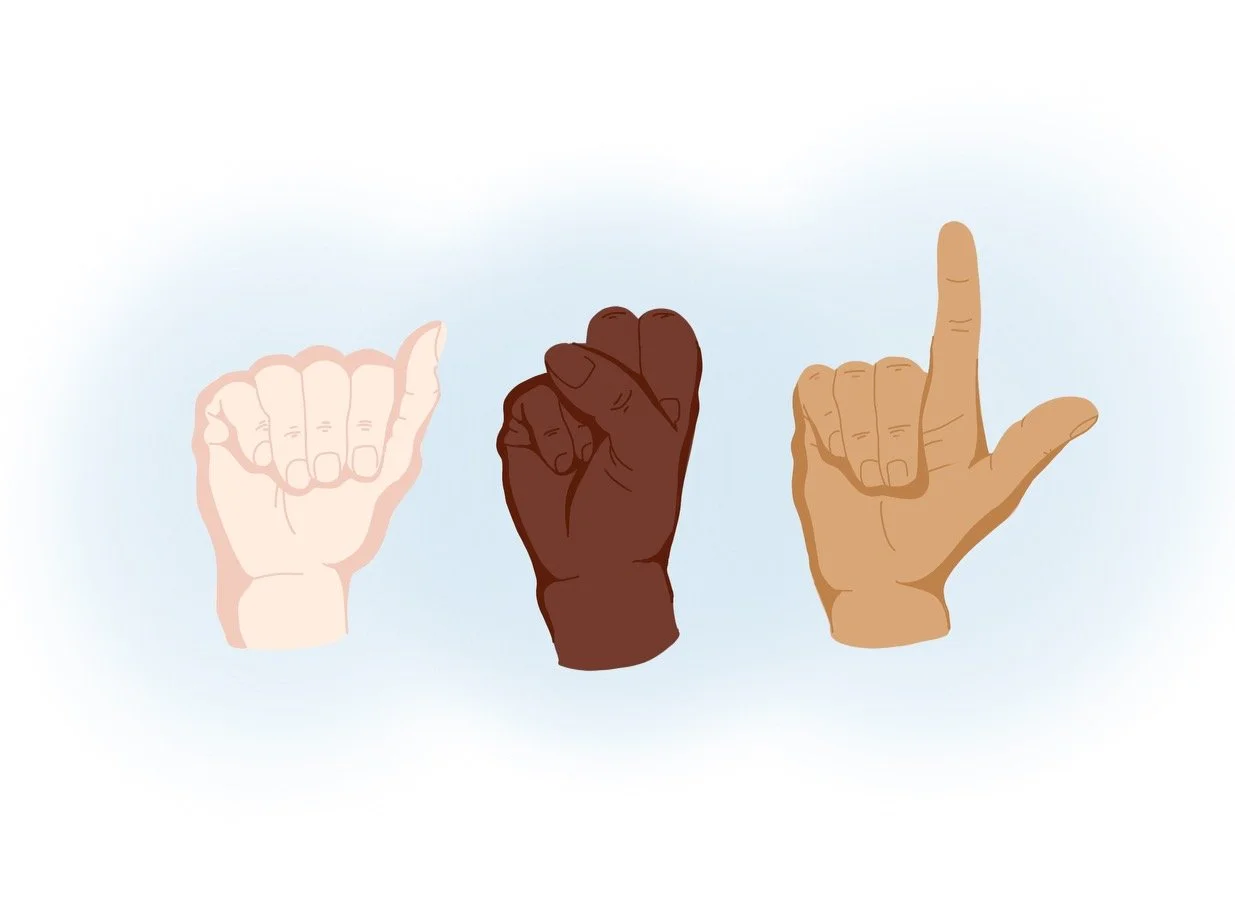Opinion | Open letter about the inclusion of ASL in public schools’ language curriculum
American Sign Language (ASL) is widely prevalent within the United States, and its awareness is only growing. This is a letter to the Superintendent of Hawai’i Public Schools, urging for the inclusion of ASL within the curriculum offered to students. With the inclusion, a barrier will be broken between the deaf community and those surrounding it. Illustration by YANA SAMOYLOVA, Illustrator
Dear Keith Hayashi, Superintendent of the Hawai’i Public School System:
In the early stages of schooling, students are introduced to the American Sign Language (ASL) as the alternative voice used by those who have lost the privilege to hear. As a former student of the Hawai’i Public School system, I can proclaim that this introduction was indeed just that: an introduction.
At most, we were taught the language's alphabet. My memory of how to sign those 26 letters is blurry, and there is no argument that knowing just the alphabet does nothing to aid in understanding and communicating with those who are deaf. Due to this, a barrier is created between public school students and the deaf community of Hawai’i, therefore producing a need for ASL to be included as a language course offered.
In the United States, there are about 1,000 schools that offer ASL as a foreign language course, despite the fact that it is the third most-used language in the country, which accounts for 2.9% of the population. If anyone had the desire to learn beyond the ASL alphabet in the state of Hawai’i, it would not be possible for them, as the state does not have one of the 1,000 schools offering ASL language courses. This deprives any individual of acquiring knowledge about the language while in the public school system and forces them to look elsewhere to learn.
Shea Higa, sophomore health sciences major
During my time in high school, I worked in the customer service industry, and once in a while, this particular customer would come into my workplace. He would never speak while ordering and would, in turn, come prepared with a written note regarding what he wanted. It became clear that he was deaf and didn’t understand my spoken words.
One day, I had a question regarding his order, but I couldn’t ask it by speaking. So instead, I wrote it down for him. Although this was efficient enough to get what I was trying to say across, I felt a disconnect between the customer and me, as I could not properly communicate with him and provide the highest level of customer service.
The Japanese I had taken as a foreign language course did nothing for me at the moment. But had I been given the opportunity to become proficient in ASL during my time in public school, this interaction would have looked different. Knowing ASL would have allowed me to convey messages to the customer naturally, without a language barrier.
Yes, there is the Hawai’i School for the Deaf and the Blind, which aids those who have these impairments. But what about their siblings and family members or those who are deaf but cannot make the commute to the school’s only location?
If other resources are not available, these individuals would not be able to learn ASL, creating a divide in their relationship with those who are deaf. By adding the language into the curriculum in public schools across the state, opportunities would be created for those beyond the attendees of the Hawai’i School for the Deaf and the Blind.
Hawai’i has prided itself on its strong community, but how can that be so if part of the community is left out of the education system? Offering ASL classes as a foreign language course will not only allow students to learn the language and connect with deaf individuals, but it will also create inclusivity and cultural awareness among the population.
Beyond the relationships that can exist through the knowledge of ASL, other benefits come with learning the language. To begin, knowing ASL leads to a higher reading level and a 15-20% improvement in vocabulary among children while also increasing spatial reasoning and bringing long-term cognitive benefits to those who are able to understand it.
Beyond this, children who learn ASL are also deemed to have better social and communication skills, as well as a boost in self-confidence and self-esteem. The life-long advantages provided by ASL outweigh the nonexistent disadvantages and provide even more reasons as to why it should be included in public school education.
The current education program for foreign language courses in Hawai’i’s public school system does not provide students with the necessary opportunity to learn ASL. This creates a separation between the deaf community and those surrounding it.
To make a change and bring these given communities together, I urge you to insert the language into the curriculum for public school students, giving them a chance to benefit and learn the language that is well-spoken amongst a large population in the United States.


